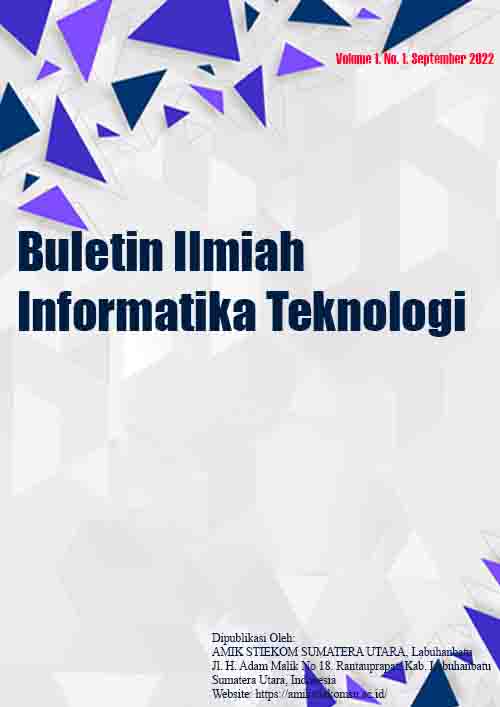Penerapan Algoritma Taboo Codes Untuk Mengkompresi File Audio
Abstract
In today's increasingly rapid technological developments, many people use electronic devices such as mobile phones, computers, iPods or other electronic devices to listen to music. Music stored in storage media is in the form of audio files. Audio or sound has several different formats depending on the user's platform. An audio file format is a file format for storing digital audio data on a computer system.
Which is usually in each format has a different size and very large. For that we need a technique that can change the size of a file to be smaller. This technique is called compression or better known as compression. In compressing audio files, the Taboo Codes algorithm is used. Where the principle of the Taboo Codes algorithm is to choose a positive integer parameter n and order a pattern of n bits to indicate the end of the code. So as a result we will be able to know how the procedures in compressing audio files. As well as the design of a software that can compress audio files by applying the Taboo Codes algorithm
References
] L. V. Simanjuntak, “Perbandingan Algoritma Elias Delta Code dengan Levenstein Untuk Kompresi File Audio,” vol. 1, no. 3, pp. 184–190, 2020.
] D. Oktaviani and I. M. Suartana, “Implementasi Kompresi Data dengan Modifikasi Algoritma untuk File Audio,” vol. 01, pp. 128–137, 2019.
] [J. Oliver, Handbook of Data COMPRESSION 5th.pdf, vol. 1, no. 2019.
] M. P. . Andi Prastowo, S.Pd.I, Menyusun Rencana Pelaksanaan Pembelajaran (RPP) Tematik Teroadu. 2017.
] [M. I. Dzulhaq and A. A. Andayani, “Aplikasi Kompresi File Dengan metode Lempel-Ziv-Welchof,” J. Sisfotek Glob., vol. 4, no. 1, pp. 1–4, 2014.
] Lamhot Sitorus, Algoritma dan Pemrograman. Andi.
] J. Oliver, Handbook of Data Compression, vol. 1, no. 2019.
] Nurasyiah, “file audio,” 2013.
] [9] Nurasyiah, “fenomena,” 2013.
] M. Nilsson, “file mp3.”
] A. Nugroho, Striktur Organisa Komputer. Andi, 210AD.
] U. Ramadhani, Pengenalan Microsoft Visual Studio 2008. Andi, 2010
Downloads
Published
Issue
Section
License
Authors who publish with this journal agree to the following terms:
- Authors retain copyright and grant the journal right of first publication with the work simultaneously licensed under Creative Commons Attribution 4.0 International License that allows others to share the work with an acknowledgment of the work's authorship and initial publication in this journal.
- Authors are able to enter into separate, additional contractual arrangements for the non-exclusive distribution of the journal's published version of the work (e.g., post it to an institutional repository or publish it in a book), with an acknowledgment of its initial publication in this journal.
- Authors are permitted and encouraged to post their work online (e.g., in institutional repositories or on their website) prior to and during the submission process, as it can lead to productive exchanges, as well as earlier and greater citation of published work (Refer to The Effect of Open Access).











